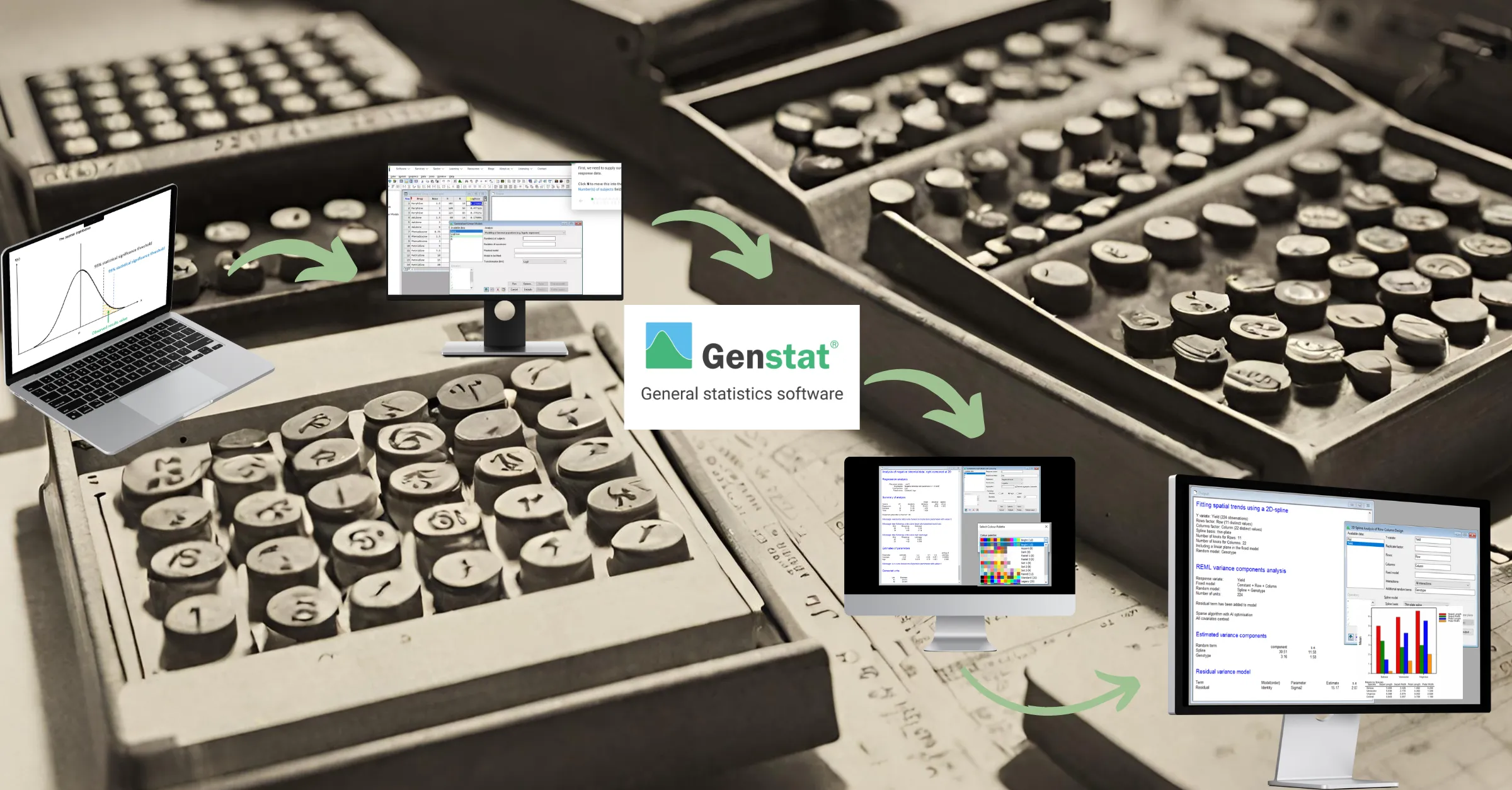A Journey with Genstat: A Conversation with Mewa S. Dhanoa
VSNi with Dan Dhanoa
28 February 2024
Statistical tools and methods have evolved significantly over time, making it possible to analyse increasingly large and complex datasets. Genstat, starting from modest origins, has grown into a comprehensive and versatile statistical software package, thanks to its continuous evolution in tandem with the dynamic landscape of scientific research. Mewa Dhanoa, also known as Dan, an accomplished statistician with a career spanning over five decades, shares a firsthand account of the early days of statistical analysis and his enduring journey with Genstat.
From Facit calculators to statistical software
Dan’s career in data analysis began in 1969 at the Grassland Research Institute, UK. At that time, the landscape of statistical analysis was drastically different, bereft of the modern computing power we take for granted today. Reflecting on those early days, Dan vividly recalls that statistical analysis was a laborious task.
“When I joined GRI (Grassland Research Institute, Hurley, Berkshire) in 1969. Simple statistical work was primarily conducted using mechanical ‘Facit’ calculators, with occasional forays into Fortran and Basic programmes. It was a meticulous process crafting 'FOR' loops to process individual data elements. Data recording in the 1960s entailed the use of 5- or 7/8-track tapes, later transferred onto marked or punched cards destined for analyses at Oxford University. The results, when they arrived, were neatly printed on 3-ply large computer paper, a far cry from today's digital outputs! However, we were aware of a new statistical software tool being developed by the Statistics Department at Rothamsted."
A paradigm shift
The introduction of Genstat in 1970 marked a transformative phase in the data analysis capabilities for the Grassland Research Institute.
Dan reminisces, highlighting "Genstat was rolled out to all 23 Institutes and special units belonging to the then Agricultural Research Council (now DEFRA). It was wonderful, we were in control of our data analyses. Genstat had all the basics and important methodologies which provided a significant boost to research productivity. Although our remote login to Genstat was limited to 30 minutes, the capabilities offered went way beyond basic calculations, enabling amongst other things regression modelling”.
Dan continues “Gavin Ross's introduction of the Maximum Likelihood Programme (MLP) marked a crucial moment, enriching Genstat with non-linear model fitting capabilities that persist in today's iterations. What I like about Genstat is that regular developments and continual enhancements expand Genstat's repertoire. Also, Genstat users could create their own procedures and some even got included in Genstat in the procedures library!”
Enduring loyalty and continued innovation
After the closure of GRI, Mewa Dhanoa was transferred to IGER (Institute of Grassland and Environmental Research, Aberystwyth, Wales) in 1990 where he stayed until his retirement in 2017. Even post-retirement, Genstat remains his steadfast choice for data analysis, boasting a wealth of methodologies and procedures vital for his ongoing research endeavours.
Dan remarks “In my latest paper, Statistical Options for Analysing Gas Production Data, I make full use of many methodologies and procedures from Genstat including repeated measures ANOVA, multivariate ANOVA, , ante-dependence analysis, and REML.”
Despite the availability of alternative software, Dan's loyalty to Genstat persists, attributing its enduring relevance and comprehensive suite of tools as indispensable for his scientific pursuits. His trusted companion, Genstat remains his statistical tool of choice he prepares future papers, enabling him to perform complex statistical analyses across a wide range of scientific fields.
Dan adds “It is always interesting when I get asked why I use Genstat instead of R or SAS. Genstat was developed long before R, and it is not as easy to perform split-plot-type analyses in SAS. Genstat provides me with all of the tools I need to conduct my current academic work, and I hope to continue using it for many years to come. Recently I needed to analyse a collection of field environment projects’ N2O emission data covering 4 projects, 20 Experiments at 14 UK geo-sites, 11 crops and 22 sources of N-nutrients for soil. For this complex study I needed machine learning methodologies (regression tree, random forest and random classification random forest models). These machine learning methods are commonly used to analyse complex multidimensional data. To complete this analysis, I found easy to use Genstat Procedures with lot of methodology information which helped me in the writing of my current Paper.”
Beyond the past and a look forward
It is clear from this that Genstat's long-term success as a powerful and versatile analysis software can be attributed to its innovative capability to constantly adapt and lead the way in statistical advancements.
Dan's impressive scientific research record, intertwined with Genstat's advancement, highlights not only its historical significance but also its ongoing relevance in contemporary scientific research. Genstat continues to embrace and incorporate the latest statistical methodologies, allowing researchers to explore complex problems. Its legacy persists not just in its past accomplishments, but in its continual innovation, firmly establishing Genstat as an indispensable tool for current and future generations of researchers navigating the intricate landscapes of data analysis.
Genstat 24 - from Design to Insights
Genstat 24, set to launch later this year, promises a host of innovative features, foremost among them being the introduction of a dedicated Menu item tailored for plant variety trials. This newly incorporated Genstat Trials menu is a user-friendly tool specifically crafted for plant breeding companies. Its functionality streamlines the creation of pipelines for designing variety trials, efficient data management, and comprehensive summarisation and analysis. Noteworthy is its automated production of Word and Excel summaries, streamlining processes for enhanced productivity.
To hear about Genstat 24 first, follow us on LinkedIn and subscribe to our monthly newsletter
Popular
Related Reads
